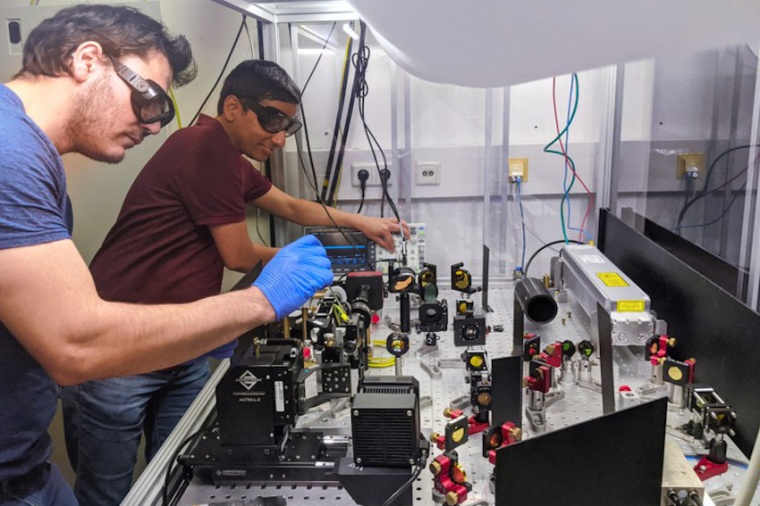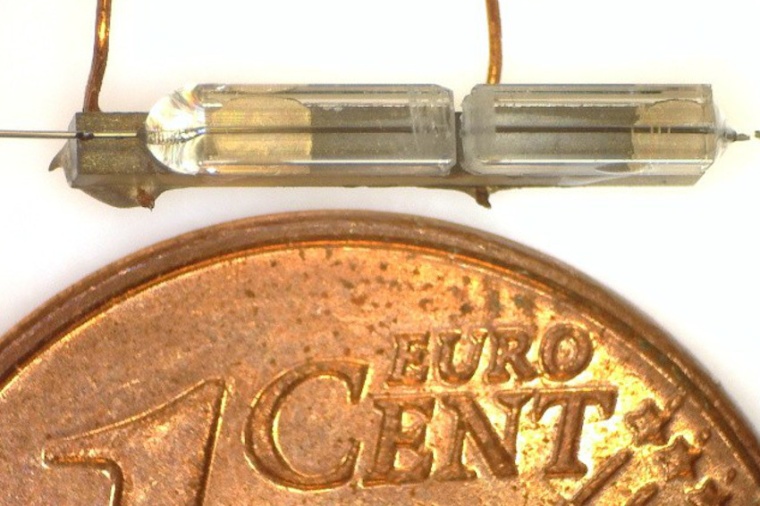Building thin optical fibers in a simple way
The prototypes are not only extremely compact and stable, but also color-tunable.
Optical fibers not much thicker than a human hair today not only constitute the backbone of our world-wide information exchange. They are also the basis for building extremely compact and robust sensors with very high sensitivity for temperature, chemical analysis and much more. Optical resonators or filters are important components cutting out very narrow spectral lines from white light sources. In the simplest case such filters are built from two opposing mirrors tossing light back and forth as precisely as the pendulum of a clock work. The color of the filtered light is set by the mirror separation.

Suitable mirrors with high quality have been integrated with the end of such hairlike fibers for some time. Researchers of the University of Bonn have succeeded to build in a simple way such hairlike optical fiber resonators. They are not only extremely compact and stable but also allow to tune their color: they have glued the fiber ends carrying the mirrors into a common ferrule which can be stretched by means of a piezo crystal and hence control the mirror separation. “The miniaturised optical filter makes a further contribution to making photonics and quantum technologies the decisive technology of the 21st century,” says Dieter Meschede from the Institute of Applied Physics at University of Bonn. The scientist is a member of “Matter and light for quantum computing” (ML4Q) Cluster of Excellence of the Universities of Bonn and Cologne and RWTH Aachen University.

Miniaturized highly stable optical precision filters are promising multiple applications: they can store light energy within such a small volume such that already single photons can be efficiently stored and manipulated. Their high sensitivity suggests to build extremely compact and selective sensors, e.g. for detecting atmospheric gases. Using even more stable materials for the ferrule tiny optical clock works with extremely high frequency stability may be built.
In addition to the University of Bonn, the Universidad de Guanajuato (Mexico) is also involved in the study. The project is funded within the FaResQ project of the program key components for quantum technology of the Federal Ministry of Research and Technology (BMBF). The infrastructure for manufacturing and processing the fibers takes place in the “Bonn Fiberlab”, which is operated by the ML4Q Cluster of Excellence. (Source: U. Bonn)
Link: ML4Q – Matter and Light for Quantum Computing, University of Bonn, Bonn, Germany











